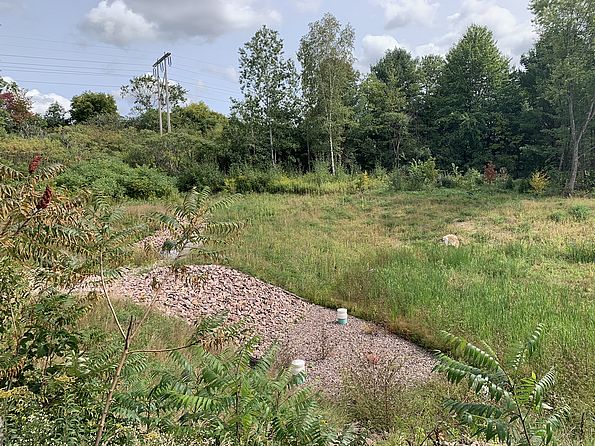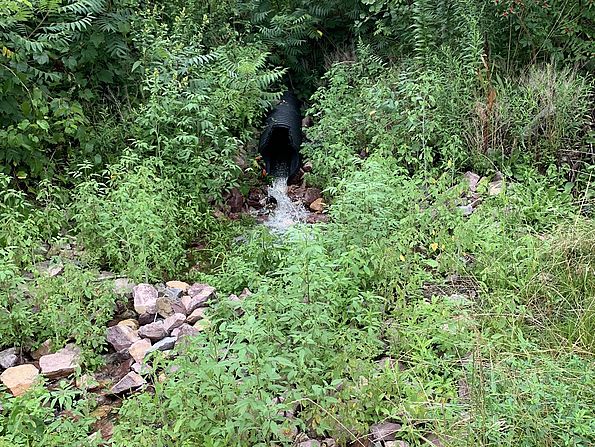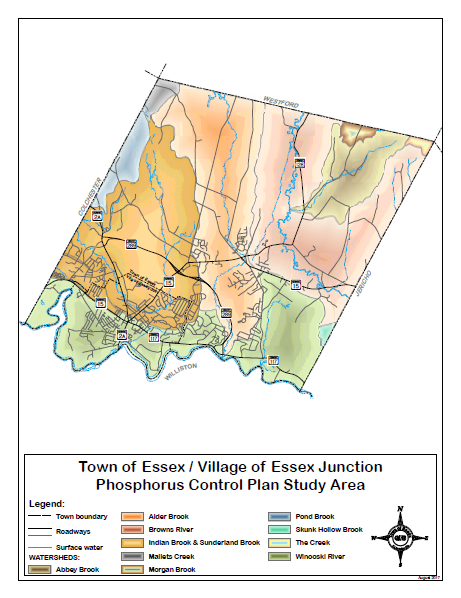Restoration and Control Plans
Annual reports are available upon request by emailing wwadmin@essexjunction.org.
Essex Junction Phosphorus Control Plan:
Essex Junction Phosphorus Control Plan Appendices
This plan was created in response to the EPA’s establishment of phosphorus (P) Total Maximum Daily Loads (TMDLs) with the goal of reducing P runoff in an effort to minimize eutrophication, or the excess of nutrients in a body of water producing algae blooms and dead zones. TMDLs cap the maximum amount of P allowed to enter the Lake from Vermont. Since developed land in the City is major source of P runoff, this plan proposes four runoff reduction projects and designated each road as either ‘hydrologically connected’ or not.
Indian Brook Flow Restoration Plan and Sunderland Brook Flow Restoration Plan:
Both of these brooks were on the State of Vermont’s impaired waters list as a result of stormwater runoff. In the effort to restore the ecosystems and lift their impaired designations, these Flow Restoration Plans were drafted and flow‐based TMDLs were calculated. These plans outline a variety of projects to retrofit existing impervious surfaces with stormwater management best practices like detention basins, bioretention filters and more to reduce high flows and increase baseflow to levels that satisfy the TMDLs. The Sunderland Brook project has met it’s TMDL goals and the Indian Brook project has almost done so. Improving the health of these brooks will have positive impacts locally and in the Lake.


Projects like this gravel wetland on Main and Fairview play an important role in restoring and maintaining the health of our waterways and communities. These projects slow the flow of stormwater to prevent erosion, flooding, and pollution traveling farther into the waterway.

